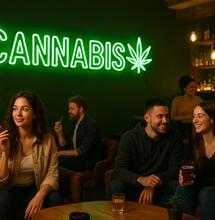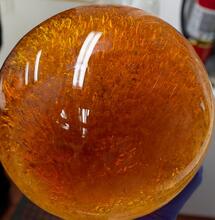Don't Wanna Smoke Weed? Here Are 7 Other Ways How to Get High.

I was gonna clean my room until I got high. I was gonna get up and find the broom but then I got high. And even if you don't smoke, you can still get Afrojack high.
Sharing a spliff undoubtedly goes down in history as the most famous way to get "high." With a sprawling cannabis market, which by the day gets bigger, consumers can enjoy smoke-free marijuana in more ways than anyone thought possible.
Business experts nod that the future of cannabis is not going to be smoking. It's going to be all other kinds of stuff. And that future is here. Alternatives to smoking marijuana include ingesting edibles, vaping, concentrates, tinctures, syrups, rubs, capsules, pills, and whatnot.
1. Wake and bake edibles.
From the iconic "space cookie" to THC-infused gummies, candies, and lollipops, edibles are a potent way to ingest cannabis in the body without irritating your lungs. In the 1980 and 1990s, nobody thought edibles would one day overtake the marijuana and hemp markets, but tables have turned.
Beverages, tinctures, and secret ways to consume cannabis such as pills and capsules also classify as edibles. This is due to the same route all these different products take in the human body after administering.
For every edible that gives users a cerebral high, there is CBD edible which helps those who just want to medicate with cannabis without any mind-altering effect.
Decarboxylation is the process that activates THC with exposure to heat. Marijuana users can master this process and prepare various snacks themselves. That is, if you are not too high and tempted to burn down the kitchen.
If you are new to edibles, note that every person's liver metabolizes cannabinoids differently, so THC edibles, no matter in what form they come in, will generate different effects in different people.
2. Powders, pills, and capsules.
Classic cannabutter and oil-based extracts were, until recently, the only way to manufacture edibles. The very fact that oils are not soluble in water and therefore hard to mix, has been a real hardship for mass-producing edibles, with companies sometimes spending years optimizing their offer.
Enter cannabis powder, it's revolutionizing cannabis edibles manufacturing. THC in the form of powder first appeared in West Coast dispensaries. This isn't simply an extra-fine ground marijuana flower, but a pure cannabinoid oil encapsulated in starch or similar carbohydrate. THC powder behaves like sugar and acts as an easily solvable substance. Administered no different than sports supplements, powder has precise dosing, it's easy on the stomach, and hits quicker than classic edibles.
THC pills and capsules offer similar experiences as powders. People who detest the idea of smoking or are just skeptical about medical marijuana, rely on pills and powders as they are traditional for Western medicine. So very often, it's medical users who opt for these forms of getting high and medicating.
3. THC syrups.
Different types of liquid can contain marijuana, but THC syrups are perhaps the most remarkable type. Brands like "Cannavis" or "Baked Bros" sell pourable THC syrups in flavors like watermelon, raspberry, peach mango, grape, cherry and kiwi. Sweet and luscious, syrups vary in strengths but, for the most part, are a pretty potent way to get high. Without causing lung impact.
Cannabis concentrates such as hash oil are commonly used as the basis of syrup. THC-concentrated syrup can additionally contain vegetable glycerin, agave, sugar, or coconut oil.
With the same consistency as classic cough syrups, THC syrups can be taken orally or added to drinks and cocktails. If you've tried hash brownies, gulping some THC syrup will work a similar effect.
4. Cannabis transdermal patches.
Don't want to inhale nor wanna ingest pot. In this case, use transdermal pot patches, allowing cannabinoids such as THC and CBD to penetrate the skin and enter the bloodstream. The response is long-lasting.
Transdermal patches often contain equal amounts of both CBD and THC. Patches primarily have a medical application. People use them for common conditions such as inflammation and pain.
For pain use, a transdermal patch can dispense more cannabinoids into the bloodstream that will reach the area of pain in the body than oral CBD. A patch is also more effective for specific pains, such as shoulder pain or back pain. Users are advised to apply the patch directly on the site of pain in this case. Those with sensitive skin should be cautious with the patches as it can irritate the skin.
There are also CBN patches, which can specifically help people with sleep issues. CBN or cannabinol is a less famous cousin of CBD. CBN studies are still in their infancy, however, this cannabinoid is largely perceived to be a superior sedative. Aside from insomnia, it also helps with pain relief.
5. Cannabis tinctures.
Tinctures use alcohol as a solvent to unleash the healing properties of cannabis. Remedies in the form of tincture are also one of the oldest ways to prepare and consume marijuana, with widespread use before marijuana prohibition.
Cannabis tinctures can be dispensed below the tongue or directly on the tongue. Users should wait for just a little before they swallow. As a liquid solution, tinctures can also be added to tea or other warm drinks.
Tinctures offer unprecedented freedom for users to test their limits. New users who have no idea how much THC they can tolerate, can begin with a few drops of the extract and gradually increase. After a while, you will know exactly how much you need to feel jubilant.
If you know how to decarboxylate marijuana flower, you can quickly learn how to prepare a home tincture.
6. Cannabis vapor.
THC will not absorb in the bloodstream as quickly as when it's smoked, so users who don't have the patience to wait for edibles to kick in - often go for vaping. THC gets in higher concentration in the blood from vaping than from smoking, therefore the stoning is pretty hard.
Vaping is heating the marijuana to a high degree temperature in order to vaporize the THC. Breathing in the vapor is a clean exposure to THC, without consuming toxic chemicals that may persist in the smoke.
Vaping pens work with both THC and CBD oils, concentrates, and dry flowers. The vaping device converts the oil into vapor without releasing a strong, pungent smell. In legal states, users can purchase liquid THC cartridges or just any cartridge that you re-fill with homemade cannabis juice.
7. Cannabis wax.
It's the soft, gooey, and high-concentrated resin with 60-80% THC content that can really knock you out. Cannabis wax can be more high-gratifying than either vaping or edibles. With its extraordinary potency, wax is no joke if you just have your debut with marijuana.
Wax uses Butane as a solvent and is not recommended to prepare at home. Wax requires a higher temperature to combust, therefore is consumed with a dab rig, a bong, pipe, or vape. Dabbing is the favored method to consume wax concentrates. Wax lovers make use of a dab rig with a dab nail made from titanium, glass, or ceramic. Touching the wax with a heated nail instantly converts the concentrate into a vapor that needs to be inhaled.
Similar to cannabis wax is cannabis shatter. Cannabis wax also goes by the names of Butane Hash Oil (BHO), honey oil, and 710 (or oil, if you properly read that from behind).



